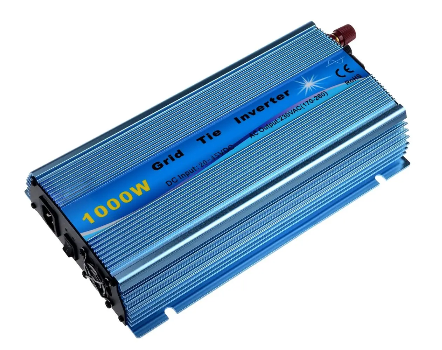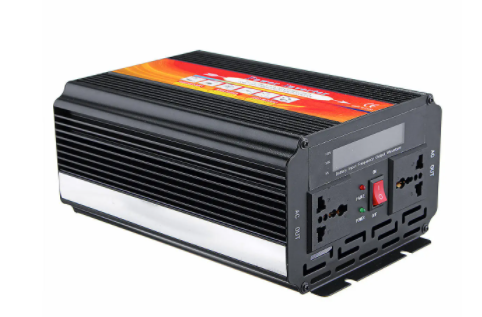Table of Contents
ToggleEvery solar power system comes with a solar inverter as it is a main component of the system.
But is a solar inverter totally necessary for solar panels to function properly? How is this electrical gadget important and when can it be done away with?
We answer all these questions to help you understand solar inverters better.
What is a solar inverter?
It is basically a simple computer that converts, or ‘inverts’, direct current (DC) generated by solar panels into alternating current (AC).
Whether it is a home, mobile or solar power plant installation, the solar inverter is usually an integral part of the system.
Most solar inverters look like an unassuming rectangular, flattish box. It is hooked up to solar panels and forms the intermediary link between solar panels with the electrical exit points, such as power points and batteries.
What does a solar inverter do?
In summary, it can do the following:
- Conversion of DC to AC power
- Maximization of energy production
- Ensuring safe system operations
- Improve grid assistance capabilities
- Efficient tracking of power output
Photovoltaic panels produce DC power but many electrical appliances use AC. In fact, most homes in the world have electrical wires running throughout which can only carry AC. Even utility grids only run on AC. Without a solar inverter, the electricity cannot be used, and cannot be channelled into an electrical grid, and vice versa.
With the progress of technology, solar inverters have become more multifunctional. Some newer models can even be hooked up to the internet.
This allows the user to monitor and track the performance of the solar power system remotely. The feature also comes in handy when a comparison needs to be made between solar electricity and grid electricity consumption.
Aside from data monitoring, the remote access also allows advanced utility controls to ensure the inverter can operate at an optimal performance level.
Does a solar inverter store power?
No, it is not made to do so. The part of the solar power system that serves this function is the solar battery.
Can solar panels work without an inverter?
Yes, of course. Output from solar panels does not stop just because the solar inverter is missing or malfunctioning.
If your appliances run on AC, you just won’t be able to use the electricity produced by the solar panels, as it is in the form of DC.
There are instances where a solar inverter can become redundant. These would be when your appliances run on DC. If there is no need to convert electricity into DC, why have the solar inverter? Solar-generated power is already in DC.
In a purely off-grid setting where a place relies purely on solar power and all the appliances run on DC, an inverter is likely to be unnecessary. However, in a hybrid system where both solar and grid power are used, solar inverters are essential.
This is because grid power is in AC as DC cannot travel long distances. That is why AC is the form supplied to consumers. Therefore, even if the consumer’s appliances mostly run on DC, an inverter is essential for grid-connected electricity.
How long do solar inverters last?
Some solar inverters on solar panels can last about 10 to 12 years; some have a lifespan of only 5 to 10 years. However, this may depend on the brand and model. Solar inverters typically need to be replaced at least once in a solar power system’s lifetime.
Do solar inverters need servicing?
Yes, they do. Regular maintenance is required in order to ensure its optimal inverting efficiency.
Can I leave my solar inverter on all the time?
Yes, leaving it on does not harm the solar inverter. Besides, it is designed to do this. It can be stopped especially during the night when no solar energy is available. If it is left on at night, it will continue to draw power from batteries and continue consuming electricity.
Do solar inverters turn off at night?
Not on their own but you can set them to do that. This is because they will continue using up precious power even when it is not being used.
How much power does a solar inverter use?
Idle power consumption can range from 15 watts to 50 watts for a home solar installation. Some models use 25 to 60 watts even when no AC power is being used.
Where should I place my solar inverter?
The best place for it is somewhere away from direct sunlight with proper air ventilation. The place should be easily accessible for maintenance purposes. It is best to position it to face north and away from constant exposure to moisture.
How many solar inverters do I need?
It depends on the solar power system. The smallest one no matter the wattage will need only 1 solar inverter. Inverters also come in different capacities. Therefore, how many are needed varies according to the size of the system, the inverter capacity, inverter type and model.
How do I know if my solar inverter is working?
Check the colour of the lights shining on the solar inverter box during the daytime when the system is supposed to be running. Green indicates it is working properly. Red or orange means there is a fault.
Types of solar inverters
- Straight string inverter
- Optimized string inverter
- Microinverter
- Hybrid or battery-based inverter
- Central inverter
- Off-grid or standalone inverter
- Grid-tied inverter
- Single-phase inverter
- Three-phase inverter
Conclusion
For the most part, solar inverters are essential to solar power systems. Exceptions apply only in instances where DC is being used directly and the system is standalone. The role of solar inverters has changed due to technological advancement, making solar inverters multi-functional in useful ways.






